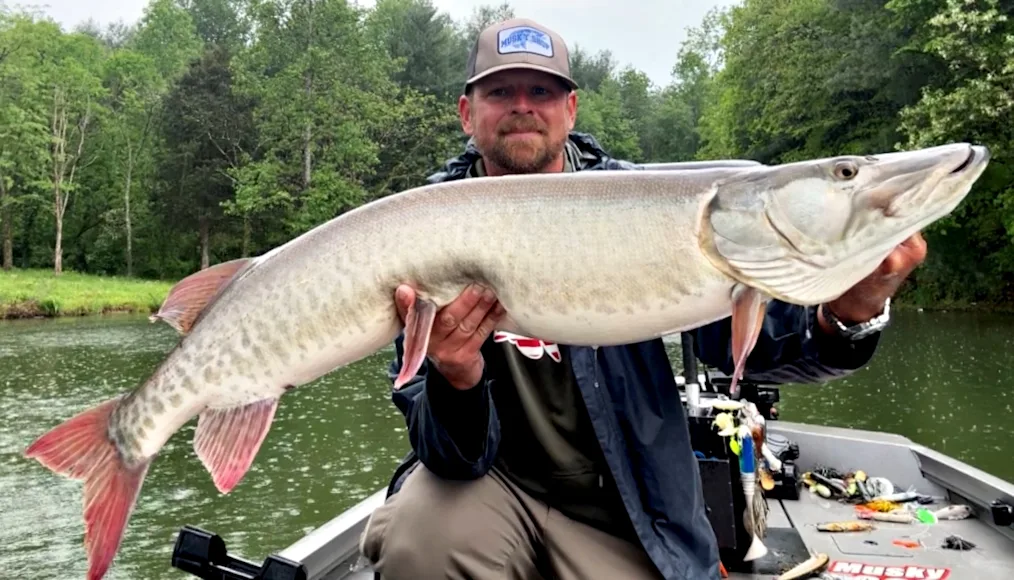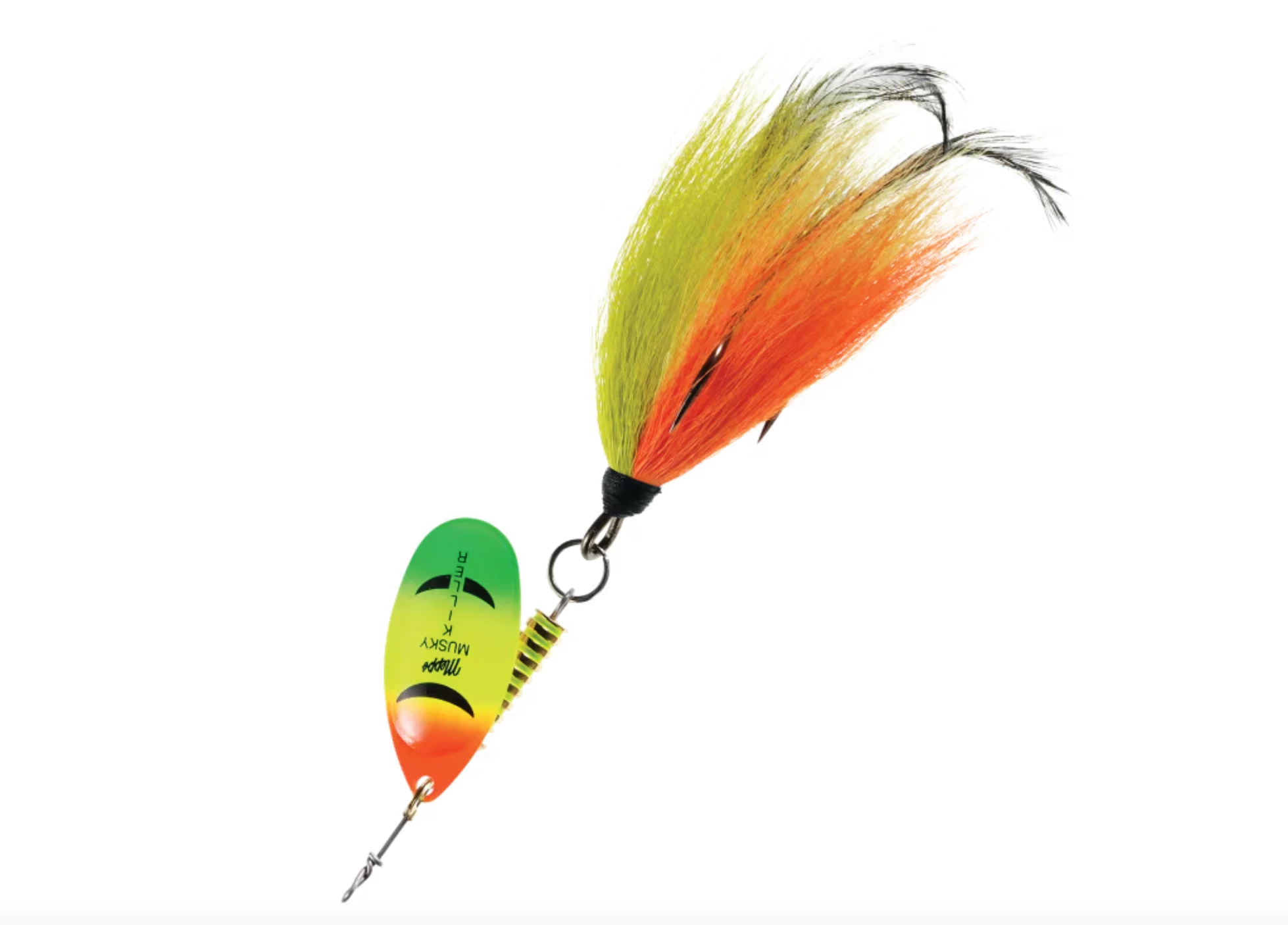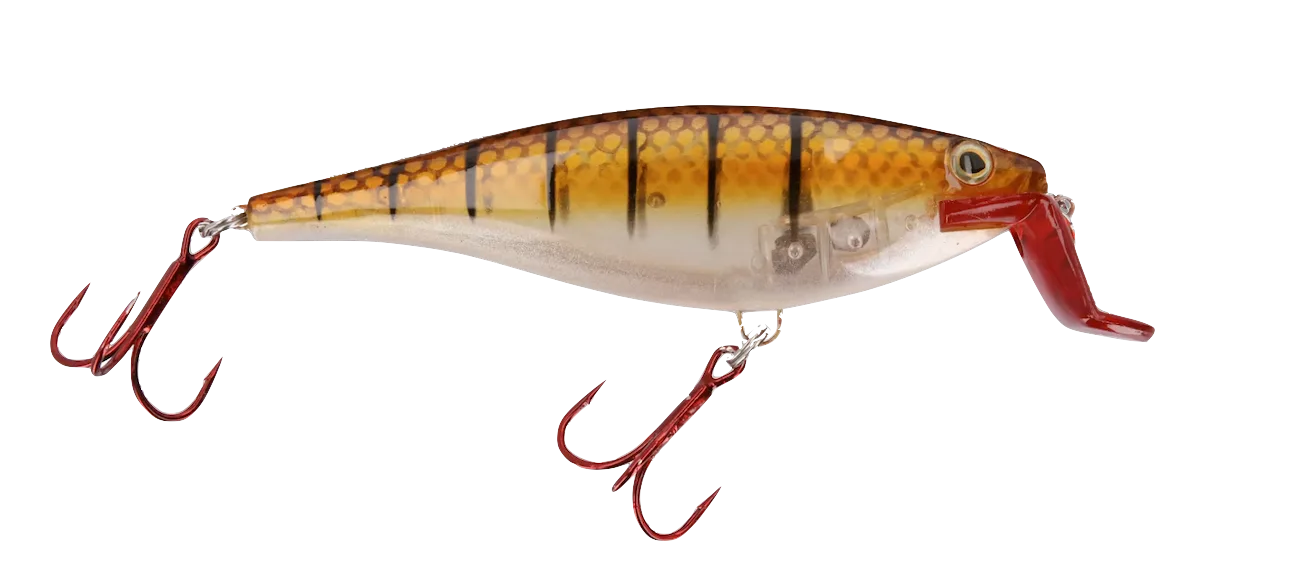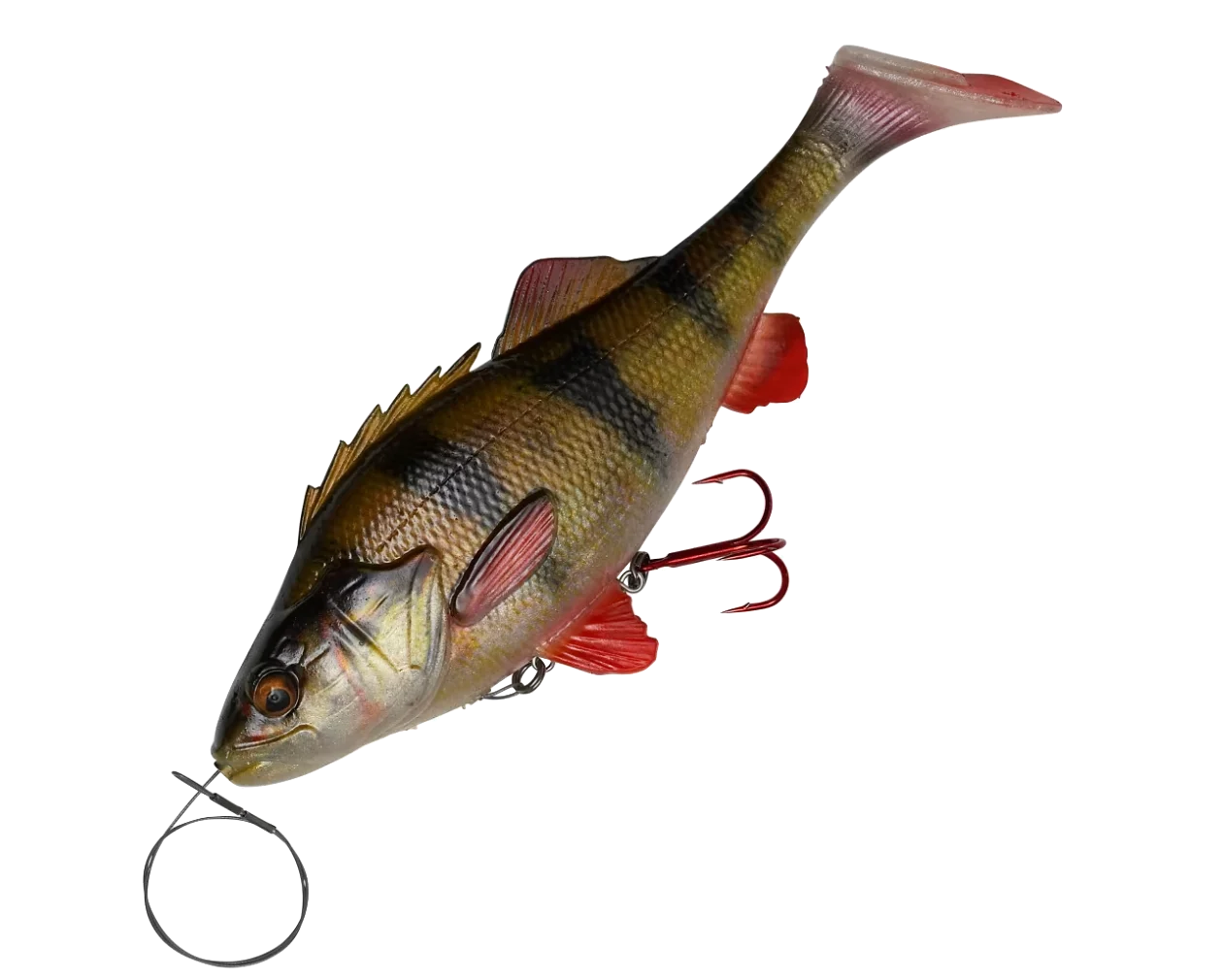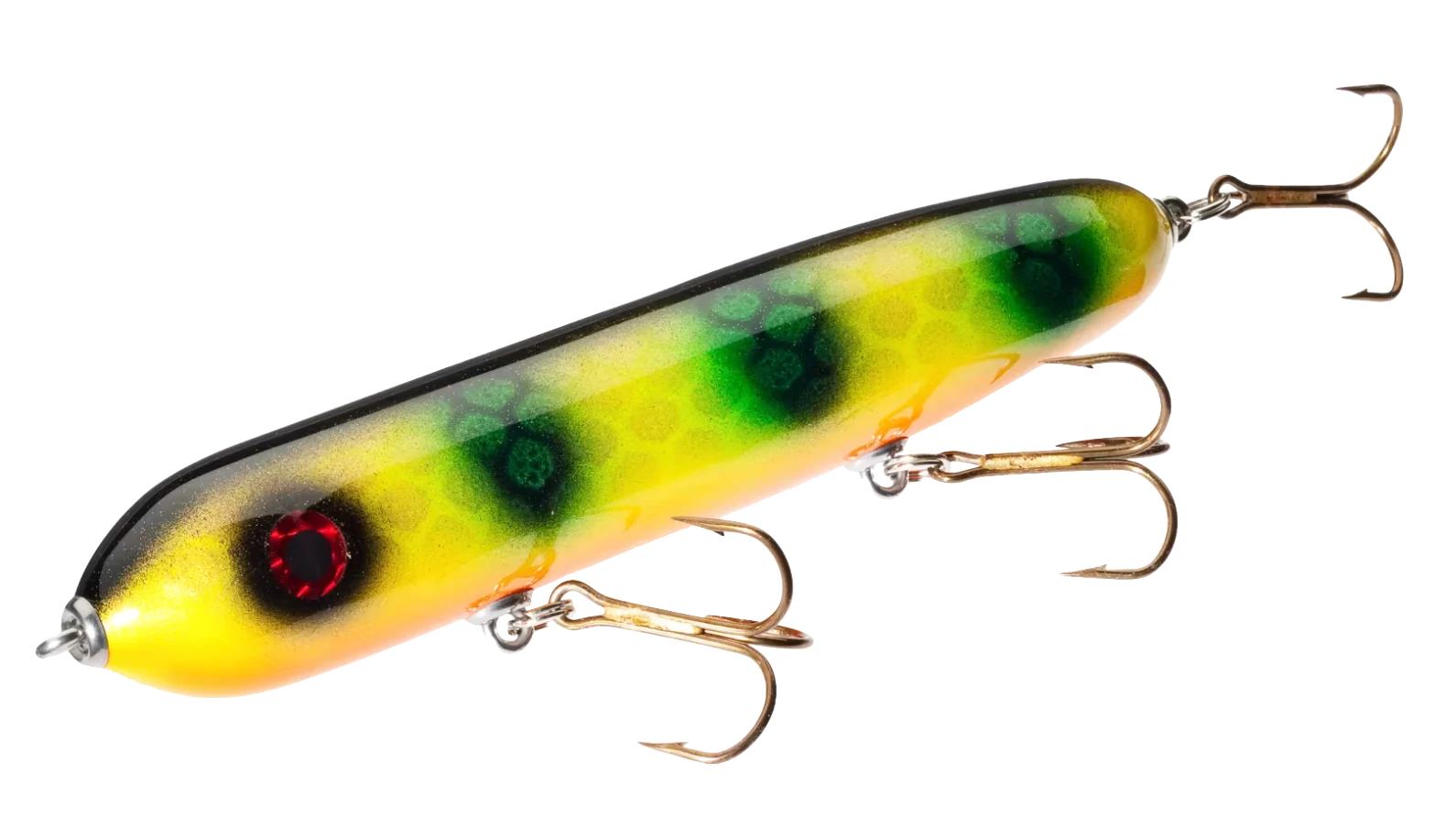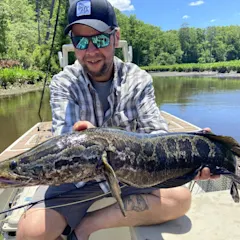Full disclosure: I am not an expert muskie angler. If anything, muskies are the bane of my existence as a fisherman. That doesn’t mean, however, that I don’t have a deep appreciation for them as a target, and that I wasn’t over the moon every single time I put one in the net. To date, I have six muskies to my credit, which by muskie-zealot standards isn’t that great of an achievement. Part of the reason I haven’t caught more is simply because I have fishing A.D.D.; I’m so into variety that I have a hard time passing on trout, stripers, smallmouths, tuna, and many other species. But over the last 20 years, I’ve spent time on the water with many anglers who live for muskies. I have the utmost respect for those willing to work giant lures until their wrists ache, and even when they fail to catch fish, get up and do it all again the next day.
If you’re reading this, I have to assume that you’re not ready to jump into full-on muskie fishing torture. Maybe you’re thinking about giving them a shot. Maybe you’d just like to land your first one. Or perhaps they exist on local waters you frequent for other species but you can’t seem to get your hands on the elusive ‘skie. If that’s you, I’m more than qualified to help, because like you, I dabble in muskies, which requires a different mindset than becoming utterly devoted to them. Mountains of content have been created by muskie nuts all over the country. It’s a rabbit hole of epic proportions, but before you dive in, here’s my honest, no-nonsense advice for testing the muskie waters and getting that first one under your belt. After you do that, I take no responsibility for the amount of muskie tackle you buy and time you spend pursuing them.
Why Are Muskies So Hard to Catch?

Muskies are known as the “fish of 10,000 casts,” and it’s a fitting nickname. Compared to their cousins, the chain pickerel and northern pike, even small, young muskies simply don’t feed as voraciously. They are generally more selective about what they attack, far more wary, and often feed in windows dictated by water conditions, the weather, and even the moon phase. The bigger a muskie gets, the more selective it becomes, making success a combination of presenting a lure that fools these smart predators and presenting that offering during a feeding window.
Big muskies dine on large prey like suckers, trout, small bass, and small carp, and after a big, protein-rich meal, they may not open their mouths again for days or even weeks because their metabolism is slower than many other popular gamefish. Once you understand what you’re up against, there are two angles of approach: You get nuts about tracking weather and moon phase in an attempt to pinpoint the perfect muskie window, or you just go muskie fishing when you have time and don’t sweat the details.
Diehard muskies guys are cringing at that second option right now, which I totally understand. But what none of them can deny is that loads of muskies are caught year over year by people who don’t lose sleep over muskie fishing. In fact, many of them aren’t trying to catch muskies at all.
To use my home river, the Delaware, as an example, it’s loaded with muskies. In all my years fishing it, however, I’ve never caught one. I chalk that up to bad luck, but I have a bunch of friends who catch them every year. Most of the time, however, these people were not muskie fishing. They were throwing plugs for striped bass, spinnerbaits for smallmouths, or jerkbaits for walleyes. What this proves is that timing matters most, even if you weren’t trying to time that feeding window; if you just get on the water enough, you’ll find yourself in it eventually. It also proves that if you’re there during a feeding window, you don’t have to get the most expensive custom muskie lure in front of one to flip its switch. Nor do you need the most specialized muskie rod and reel to successfully land one. So, let’s make the muskie nuts cringe again and break down what I believe is a sufficient outfit to get you started.
What Kind of Gear Do I Need for Muskie Fishing?
I’ve seen lots of large muskies caught on light rods and reels more suited to bass and walleyes, but I don’t recommend it for several reasons. For starters, you’re going to want to cast larger, heavier lures during a dedicated muskie hunt, and to deliver them properly, you’ll want a stout rod. Muskies also have hard jaws and lots of teeth, so a forceful hookset is usually required to make sure your lure stays pinned, and achieving this would be difficult using a rod without enough backbone. Finally, for the sake of a clean, healthy release, you want to minimize the fight time with a muskie. Given that they’re almost exclusively targeted for sport and not food, it’s common to see anglers muscle them to the net quickly to reduce the amount of stress on the fish. A proper rod will help in this process.
There are loads of rods on the market specifically for muskie fishing, and some of them will cost you a pretty penny. Your budget is a big factor, but regardless of how much you want to spend, I’d recommend a baitcasting rod in the 7’6” to 8-foot range in heavy power. This is, in my opinion, a good middle-of-the-road length and weight that will cover the bases for boat- and shore-based pursuits and a wide variety of lure styles.
As for a muskie reel, you’ll want one with a high rate of retrieve so you can pick up line quickly if a muskie is running at you or if you need to work lures at a good clip. Low-profile baitcasting reels designed for muskies are larger than those made for bass, as they hold more line and are better equipped to handle heavier line. Shimano’s Tranx is a popular muskie reel.
Most of the serious muskie anglers I know spool their reels with 50- to 65-pound braided line. It’s great for throwing extra-large lures, and it certainly creates a better insurance policy when a true goliath is on the line. If you want to spool that heavy, go for it, however, it’s my belief that 30- to 40-pound braid is sufficient in most cases. I’ve landed loads of 40-plus-pound striped bass on it, and they fight a lot harder than muskies. Lightening up your line will also make it easier to cast lighter lures greater distances.

The final piece of kit you need to worry about is a bite leader. Countless videos are available on YouTube about building your own, many of them produced by true muskie aces. But just to get started, there’s nothing wrong with buying pre-made leaders. All you have to decide is if you want to lean on heavy fluorocarbon or steel. The former is more invisible underwater, which many muskie anglers believe helps them score more bites. But even in heavy diameters, you run the risk of the fish’s teeth biting through it. Steel is more obtrusive and some believe it dampens the action of a lure, but when that lure gets hit, you can rest assured those fangs aren’t cutting through.
What Are the Best Lures for Muskie Fishing?
The topic of best muskie lures is complicated. Not only are there tons of makes and models available on big-box tackle shop shelves, but there are also hundreds of smaller-operation custom lure makers with regional and national followings. It’s a lot to parse out, but before you can figure out which specific lures will earn your loyalty and confidence, you need a basic understanding of the common categories of muskie lures. Here are what I believe are the five most important.
In-Line Spinners for Muskie Fishing
Commonly referred to as “bucktails” in the muskie world, in-line spinners are ultimately nothing more than bigger, longer, and tougher versions of the in-line spinners you might use for trout, bass, or panfish. These baits catch muskies almost year-round but tend to be most potent when the water temperature rises above 50 degrees. All you have to do is cast and retrieve steadily. However, given that a muskie needs to chase a bucktail down, it’ll be more apt to do so in warmer waters. Bucktails are also great because they allow you to cover a lot of water fast.
Diving Plugs for Muskies
Any diving plug in the 6- to 10-inch range can coax a muskie to strike, even if those lures were designed for fishing in saltwater. Just bear in mind that muskies like to hang out in and around weeds, so diving plugs with multiple treble hooks are better suited to deeper water, rivers with less vegetation, or for late- and early-season pursuits when the weeds have died off or before they regrow. These lures can be worked at any speed and paused during the retrieve, which is often when they’ll get hit during the colder months.
Muskie Glide Baits
Though glide baits have been around for many years, they have become more popular than ever in just the last decade or so. Featuring one or more joints in the body, these lures are designed to sway widely from side to side underwater, gently “gliding” along. Some custom glide baits can fetch hundreds of dollars, and the best ones are balanced to sink very slowly, which allows them to essentially hover in place when paused. These lures are prized for their ability to come to life with micro twitches of the rod's tip, though they can also be fished more aggressively if the muskies are charged up.
Soft-Plastic Swimbaits for Muskie Fishing
These lures exist in a wide variety of styles, but what most of them have in common is a pulsing or vibrating tail. Soft-plastic swimbaits can be fished at any depth in the water column depending on how much or how little sink time you give them. These days, you can find ultra-realistic models that mimic almost any local forage. Swimbaits can be reeled in steadily or even jigged vertically. A downside, of course, it that muskie teeth will do a number on them, but most serious muskie hunters are willing to replace them often if a particular pattern is scoring strikes.
Topwaters for Muskies
Catching a muskie is an incredible experience. Catching one on a topwater lure is even cooler. To date, I haven’t done it, but from late spring through early fall, when water temperatures are warmer, these brutes will frequently come to the surface to smash a lure. In fact, some argue that during tough bites—perhaps when that aforementioned window should be closed—the sound of a topwater lure gurgling, clacking, or chugging across the surface can be so enticing that even a shut-off muskie will turn on.
Where Should I Look for Muskies?

All the right muskie lures and tackle don’t mean anything if you’re not putting them in front of muskies. As I noted, muskie junkies spend months and months analyzing patterns and seasonal movements. Many of them keep logs for years that can be cross-referenced to home in on bite windows. That dedication and backlog of data can only be achieved with time on the water, of course. You have to start somewhere to begin building your own local patterns. So, here’s a general guide by season on where to look for your first trophy.
Spring
Spring is spawning season for muskies. However, before they get down to business, they feed heavily. This time of year, muskies are often roaming around in deeper water, staying in close proximity to baitfish schools or schools or spawning walleyes. In clear water, the 10- to 15-foot depth range is a great place to start. Work soft-plastic swimbaits and diving plugs in deeper areas within lake bays and coves, or in deeper wintering holes within rivers.
Summer
If there’s one constant throughout the range of the muskie, it’s that these fish gravitate to weeds. By early summer, assuming plants like hydrilla and milfoil have grown in, muskies will gravitate to weedy areas in roughly 3- to 8-feet of water. All of their favorite forage species hide in the vegetation, so they won’t be far from their food source. This is a great time of year to work a loud topwaters or bucktails over the weeds. It’s also important to note, however, that if the water in your area gets much above 70 degrees in summer, you should stop targeting muskies. Though they’ll continue to feed, hot water causes them to get overly stressed during the fight, and while the fish might swim away healthy, the lack of oxygen in summer water often causes a worn out muskie to perish.
Fall
Muskie diehards live for the fall. As the waters begin to cool, these fish know it’s time to pack on pounds before winter. They can be at their most aggressive now, and early in the fall, you’ll still find them over the weeds in deeper areas, or areas where shallow flats butt against sharp slopes. As fall presses on, these muskies will transition to deeper open water. This time of year, any and all lure styles are in play, including topwaters on warmer days.
Winter
Barring the muskies that live in the South, most northern muskies waters will ice over in the winter, especially in key muskies states like Minnesota and Wisconsin. In many regions, muskie season closes in winter, but in others it doesn’t, and if you’re targeting them on a river, the cold months offer a higher-percentage shot at a hook up. That’s because river muskies become very predictable in winter. They’ll move to any deep holes or eddies out of the current where food is abundant, and they don’t have to expend as much energy. Slow, methodical presentations are key this time of year, and bite windows can be very short.
Why Do I Have to Figure-8 My Lure When Muskie Fishing?

Now that I’ve laid a basic groundwork for starting your muskie hunt, I’d be remiss if I didn’t brief you on the figure-8—arguably the most important element of muskie fishing to understand. Ideally, you’ll make a nice long cast and a few cranks in, a muskie will hammer your lure. This gives you both time and room to swing with a heavy hand and drive those hooks in. The only problem is that’s not the way it always goes down.
Quite often, you won’t know there’s a muskie following your lure until it’s a few feet away from your rod tip. These fish are notorious for following a lure from a distance, or sometimes appearing out of nowhere just before you pull the lure out of the water. It’s critical that you’re prepared for this, keeping a sharp eye behind your lure until you’ve essentially run out of room to reel. If you see a fish behind it, what will often get that fish to commit is a quick change in the direction of the perceived prey it’s following. Quickly sweeping the rod underwater in a figure-8 pattern, with just a foot or so of line coming out of the rod tip, can keep the muskie interested at boat side long enough for it to grab. If it does, immediately sweep in the opposite direction the fish is moving to set the hook.
These close encounters are heart-stopping, frustrating, and addicting all at once. You’ll kick yourself when you botch one, but when you see that big, white mouth open just a few feet away, it can be all it takes to convert you from a beginner to an angler with a lifelong muskie jones.

